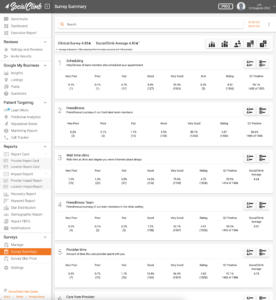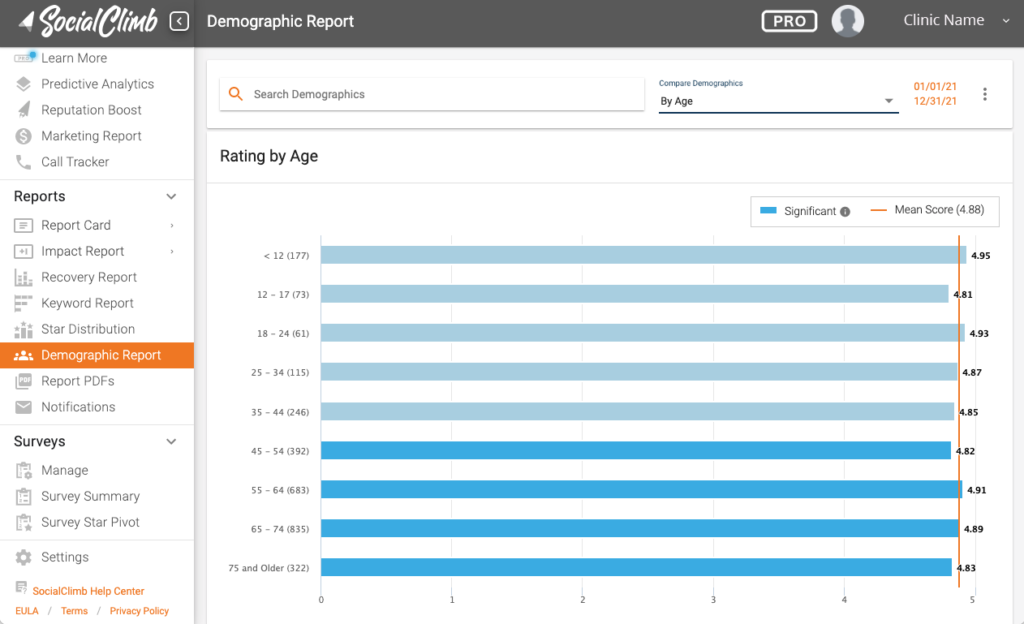Healthcare professionals can take steps to recover patient trust in the aftermath of the Covid-19 pandemic.
The Covid-19 pandemic threw the world for a loop, and the healthcare industry was hit hard. You’ve had to be nimble and innovate to make it through. Your quick thinking and flexibility will also be the driving force behind stabilizing your practice post pandemic and recovering patient trust.
Your patients’ reactions to facing the pandemic have likely been varied. Some have been—and still are—scared for their lives and their health. Others have taken all the upheaval in stride. Still others have gotten upset, confused by all the conflicting information and opinions they’ve seen. As healthcare professionals, you’ve got to be prepared to deal with every patient and the baggage they bring with them when they come in to see you. Add to the mix all the stress you and your staff have gone through, which includes being concerned with your health, the health of your staff, and the safety of your family in addition to the patients that come through your door, and you’re facing a pretty unstable situation.
With vaccines flooding the country and an end in sight—finally—now is a good time to look toward recovery. You can take these five steps to recover patient trust in a post pandemic world as you help your patients navigate their journey and position your practice for growth.
Pay close attention to reviews.
 Patients who are asked to leave a review through our automated system will do so about 10% of the time. Reviews provide a snapshot of patient sentiment and give you a high-level view of how you’re doing with meeting their needs. If your patients are leaving 5-star reviews, that’s a good indication of overall patient satisfaction.
Patients who are asked to leave a review through our automated system will do so about 10% of the time. Reviews provide a snapshot of patient sentiment and give you a high-level view of how you’re doing with meeting their needs. If your patients are leaving 5-star reviews, that’s a good indication of overall patient satisfaction.
You will likely have an occasional negative review of one, two, or three stars. Make sure you’re flagging those reviews to be routed to the appropriate individual(s) who can respond quickly and mitigate the situation. You can fix concerns on an individual level and at the same time publicly show that you care about the concerns of your patients and will take steps to address those concerns.
Both negative and positive reviews can also uncover areas in the patient journey that need improvement or staff that needs additional training. As you take small steps to improve the patient experience, you make great strides in recovering patient trust.
Use patient satisfaction surveys.
 Patient satisfaction surveys give you an even deeper look into how your patients feel about the care they receive, and understanding and improving the patient experience will help to bolster your role as a trusted healthcare delivery partner. You can send out automated survey requests to your patients through our platform that they will receive via text or email. Our customers experience a response rate of 26 – 30% when they ask for feedback through surveys.
Patient satisfaction surveys give you an even deeper look into how your patients feel about the care they receive, and understanding and improving the patient experience will help to bolster your role as a trusted healthcare delivery partner. You can send out automated survey requests to your patients through our platform that they will receive via text or email. Our customers experience a response rate of 26 – 30% when they ask for feedback through surveys.
We are set up with patient satisfaction and patient reported outcomes surveys you can send to your patients. Assessing patient satisfaction is particularly important in recovering patient trust because it provides data-based insight into how your patients are feeling about the care they have received. You can send out a CAHPS survey that’s benchmarked through AAOE Empower or you can set up your own survey with our nationally benchmarked questions or your own questions.
Our Survey Summary report will give you an overview on the responses you get for each question on the survey so you can get a feel for patient sentiment and take steps to build patient trust.
Look closely at demographics.

Our new demographics feature will show you how you’re doing across patient populations such as age, gender, race, language preference, and ethnicity. You may be doing well meeting the needs of some populations, but it’s important to ensure that you’re taking steps to deliver equitable care to underserved communities.
The Covid virus uncovered areas of disparity in access and delivery of healthcare to underserved populations. Our demographics feature will lift the lid on levels of care you provide based on age, race, gender, and other population indicators. Looking closely at review and survey responses across populations can highlight areas where improvement or training is needed and aid in recovering patient trust in specific populations. If you are a current SocialClimb customer and would like to turn on your demographics in the platform, please reach out to your customer success manager.
Fine-tune your telehealth visits.
 Telehealth visits experienced a mind-boggling increase due to the Covid-19 pandemic. Doximity’s “2020 State of Telemedicine Report” found that prior to the pandemic, only 14% of patients in the U.S. had experienced a telehealth visit. That number increased by 57% during the pandemic. The number of patients with chronic illness who used telehealth for the first time increased even more, sporting a whopping 77% jump from the previous year. What’s more, virtual medicine is slated to account for up to $106 billion of the healthcare spend by 2023 according to the same report. From all indications, telehealth is here to stay.
Telehealth visits experienced a mind-boggling increase due to the Covid-19 pandemic. Doximity’s “2020 State of Telemedicine Report” found that prior to the pandemic, only 14% of patients in the U.S. had experienced a telehealth visit. That number increased by 57% during the pandemic. The number of patients with chronic illness who used telehealth for the first time increased even more, sporting a whopping 77% jump from the previous year. What’s more, virtual medicine is slated to account for up to $106 billion of the healthcare spend by 2023 according to the same report. From all indications, telehealth is here to stay.
Now is a great time to make sure patients can access telemedicine appointments easily and that they feel secure in their experience. Pay close attention to feedback regarding these virtual visits to make sure your patients are comfortable with the interface and that their interaction was satisfactory. With telemedicine taking a more prominent role moving forward, you need to take steps now to ensure that your patients are comfortable turning to you for their care, whether in person or virtual.
Don’t ignore the needs of your staff.
 With delayed and canceled procedures, PPE shortages, job security issues, furloughs, exposure issues, and the stress of dealing with a traumatized public (I could go on), healthcare workers have been through the wringer over the past 12 months. Make sure your frontline workers feel supported and secure.
With delayed and canceled procedures, PPE shortages, job security issues, furloughs, exposure issues, and the stress of dealing with a traumatized public (I could go on), healthcare workers have been through the wringer over the past 12 months. Make sure your frontline workers feel supported and secure.
Consider having your staff take a survey to gather intel on their experience. Gauge how they’re doing and listen to their concerns. If they feel heard, and feel that their concerns are being addressed, they will feel more secure and confident. That translates to better care for your patients.
It’s important that you establish your doctors and your practice as a trusted source of information as we begin to recover from the effects of the Covid-19 pandemic. Monitoring reviews, collecting feedback through surveys, taking a look at demographics, sprucing up your telemedicine interface, and supporting your staff are critical steps you can take that will ultimately lead to recovering patient trust in a post pandemic world.
If you are a SocialClimb customer, please reach out to your customer satisfaction representative to get started with surveys or demographics. And if you’d like to see a demonstration of what SocialClimb’s platform can do for your practice or service line, please click on the link below.












